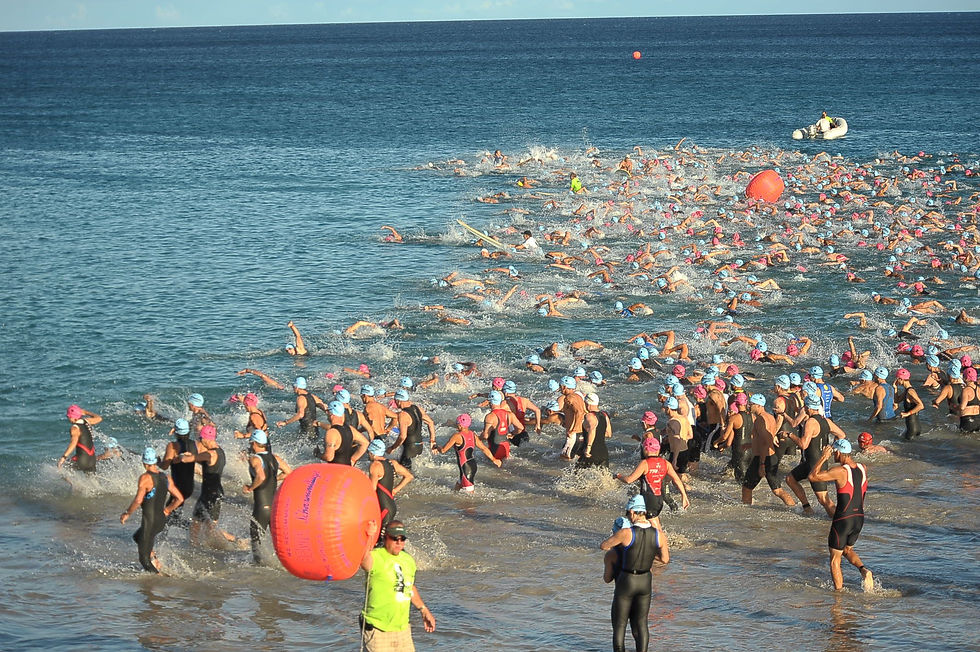The "New" Ironman
- Ron Saetermoe
- Feb 7, 2024
- 4 min read

By now I’m sure you know Ironman has a new CEO, Scott DeRue. His credentials look great, as a businessman.
However, I’m skeptical about his ability to truly understand Ironman culture and its athletes, never having done an Ironman himself. His initial comments sound positive and seem to reflect an understanding of how important it is to satisfy his customers, but only time will tell.
The growth of Ironman under Andrew Messick has been amazing. If I were the owner of Ironman, I’d be very happy, from a financial perspective. Naturally, Ironman is a business and profits come first – without them, there is no company. I just wonder what ever happened to satisfying the customer and watching the profits follow?
I’ve been in the car business (outside my triathlon racing and coaching) for 40 years and I have seen many companies attempt shortcuts and head fakes to make a buck, but what ultimately sells is what the customer wants.
Now, for sure, you can fool some of the people some of time; we see it all the time. And, if you’ve got a big enough pool of customers, you can screw today’s customers because tomorrow there will be more. Unfortunately, Ironman is running out of customers and is running headlong into some heavy competition.
So, what will Ironman do? Listen to its customers and do their best to please them and usher in a new generation of rabid Ironman athletes or continue to diminish their brand like so many once great companies have.
My two cents?
I like the fact that the 70.3 World Championships moves around. When Ironman tried to anchor the 70.3 Worlds in Clearwater and Las Vegas it was never going to take root. Moving it around has been great for the brand.
However, I believe Ironman made four strategic mistakes with its Worlds.
1. Moving the venue from Kona.
2. Splitting the men’s and women’s races.
3. Splitting the venues.
4. Doubling the number of racers.
People like traditions, me included. Ironman was born in Hawaii and has been raced in the islands since 1978 (starting on Oahu and transitioning to the Big Island in 1980). I’m sure the Collins’ never expected the race to morph into the worldwide phenomenon it did but I’m sure they never figured it would be a travelling show.
Racing the men and women at different times and different locations makes no sense to me. When the women raced in Kona and the men in Nice last year neither race “felt” like a World Championship – neither had the same anticipation, or importance.
Splitting the men and women up during the race does make sense to me. I like the age-group starts which dictates separate genders racing. When I “race” I want to race against the guys in my age group, not older men, not younger men, not women. This, to me is the “right” and “fair” way to do it.
While I know it’s a fraction of racers, my girlfriend is also a triathlete. She and I have raced Kona together several times. Splitting the race venues more than doubles the cost but not the pleasure.
Doubling the number of racers was probably the straw that broke the camel’s back when Ironman held the race in Kona on two separate days, two days apart. It’s rumored that the locals didn’t like the strain it put on the town. While I addressed this concern with Andrew Messick, I’m not convinced “the town” didn’t like it; more like a few loud locals didn’t like it. I suggested more discussions and an honest negotiation, but Ironman rolled over (I believe too easily). Tell me the restaurants, hotels, stores and vacation renters didn’t want it!
We all know the increase in racers was a money grab. It did NOTHING to improve the brand whatsoever. It ruined its exclusivity. It ruined the bragging rights for everyone that worked their asses off to qualify under the old format. Now, they’re practically begging women to race there in the name of equity! Do any Ironman and you qualify for Worlds! Really?
One last point. People also like comparisons. We like to compare our performance to others, and ourselves. I’ve raced the Ironman World Championships in Kona five times (2010, 2013, 2014, 2015 and 2016) and I analyzed my splits on the swim, bike, run and transitions more than once; as well as my performance data. I like to make comparisons. Yes, it’s never exactly the same race from year-to-year but every year the commentators like Welchie talk about course records. Why? Because we like to compare. It matters.
What’s my great idea?
Combine the men’s and women’s races again (separate waves by gender and age). Reduce the number of racers to 2,500 so they can be comfortably accommodated on the same day in the same location. Keep the race in Kona. And explore the possibility of holding another full Ironman race in Kona (not a championship) at another time of year (like March).
This creates a cohesive race again and brings back the cache it once had by making it exclusive. If it’s possible to pull off another race in March then everyone that participates can honestly say “yes” when asked, “Did you do the race in Kona?”
Anyway, thank you Andrew for answering me and keeping the race going. And thank you Scott for listening to one of your best customers. Now, don’t blow it!
See you at the races!
Coach Ron




Comments